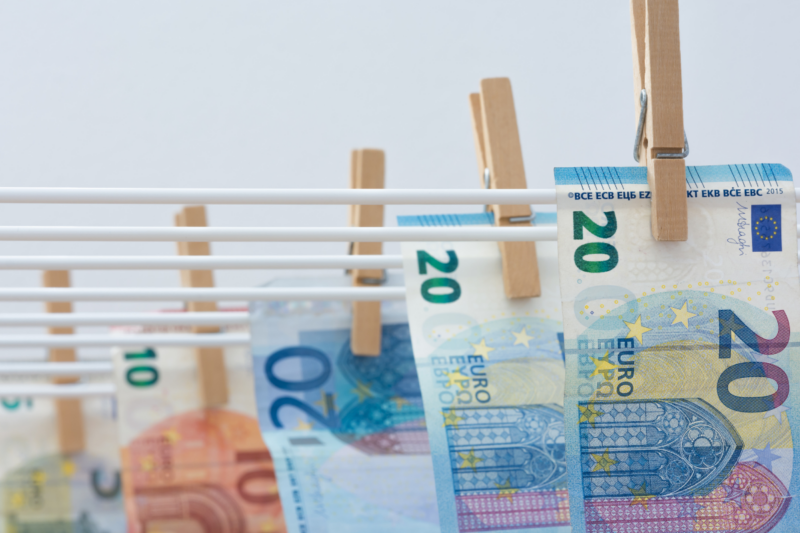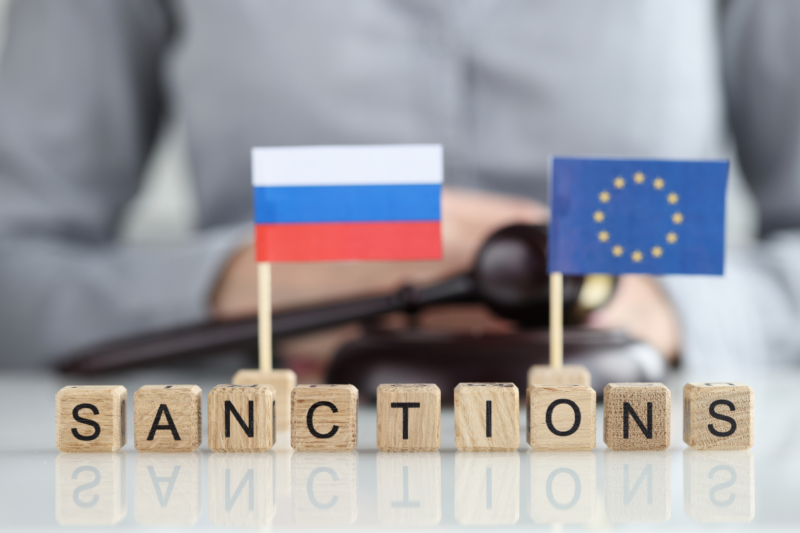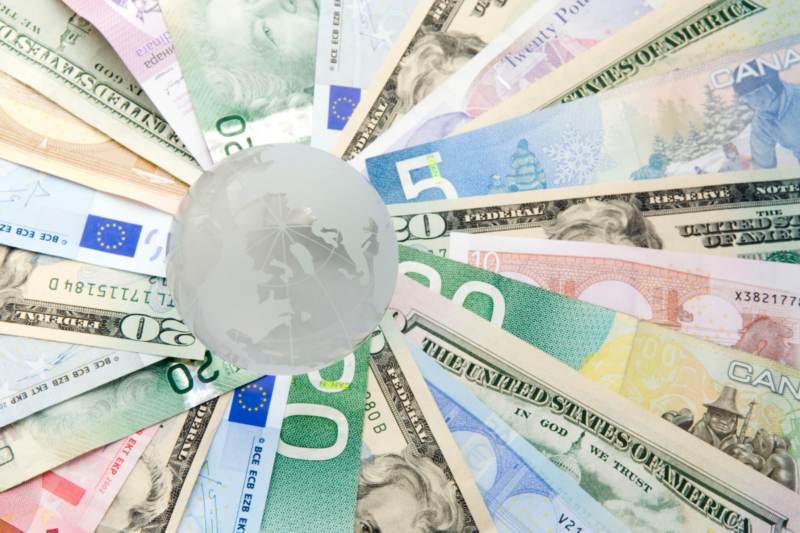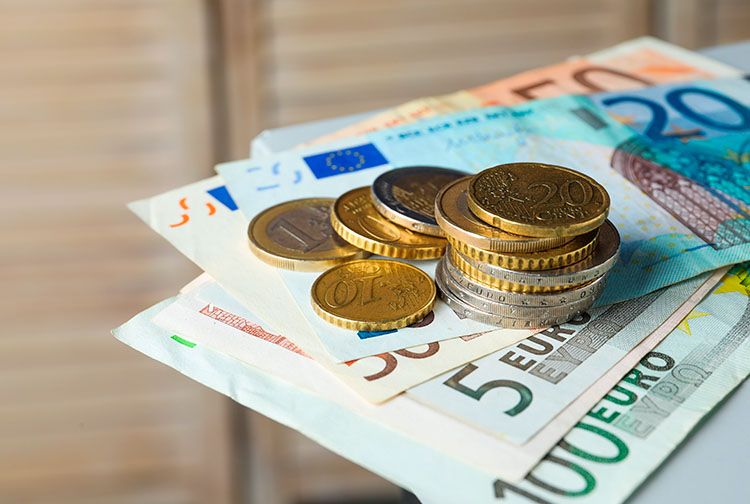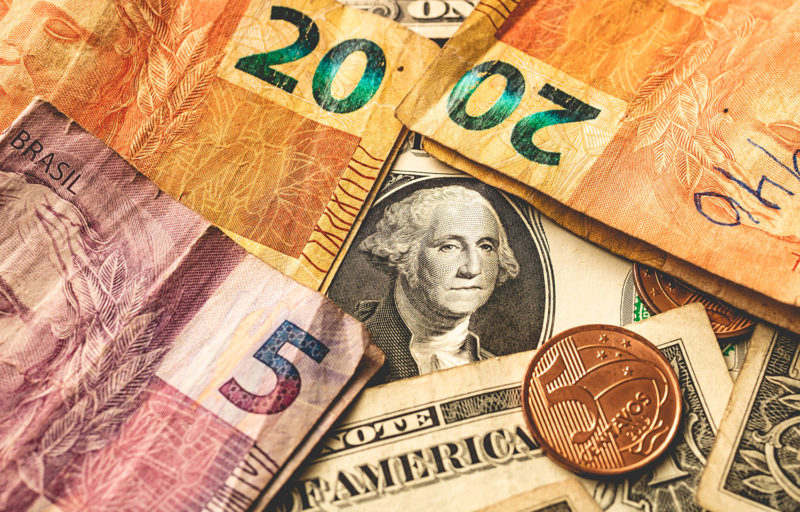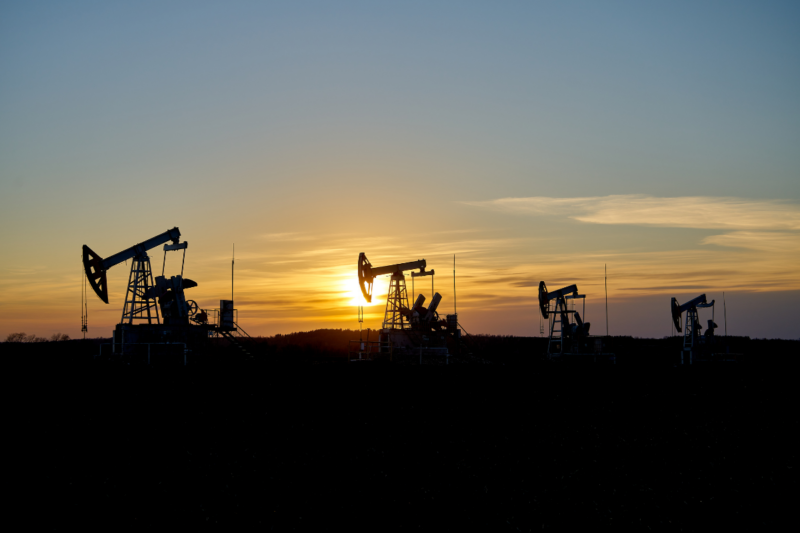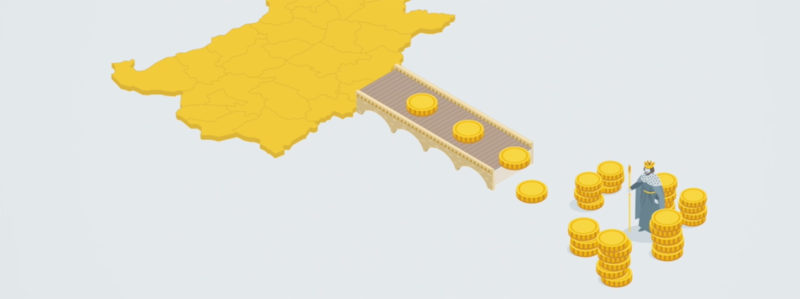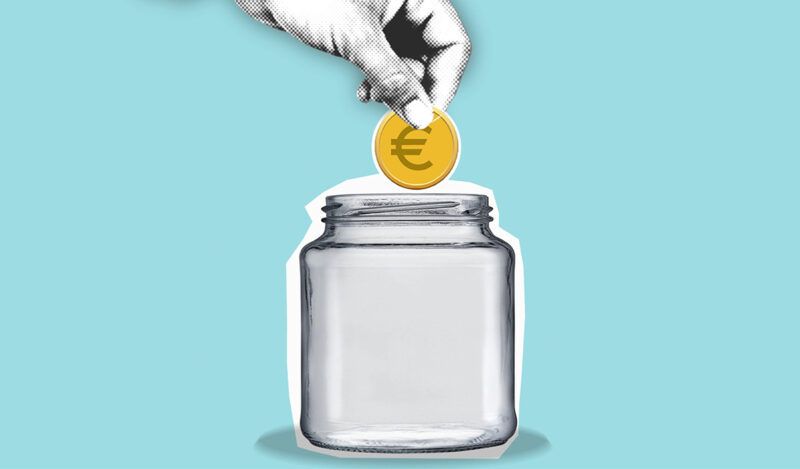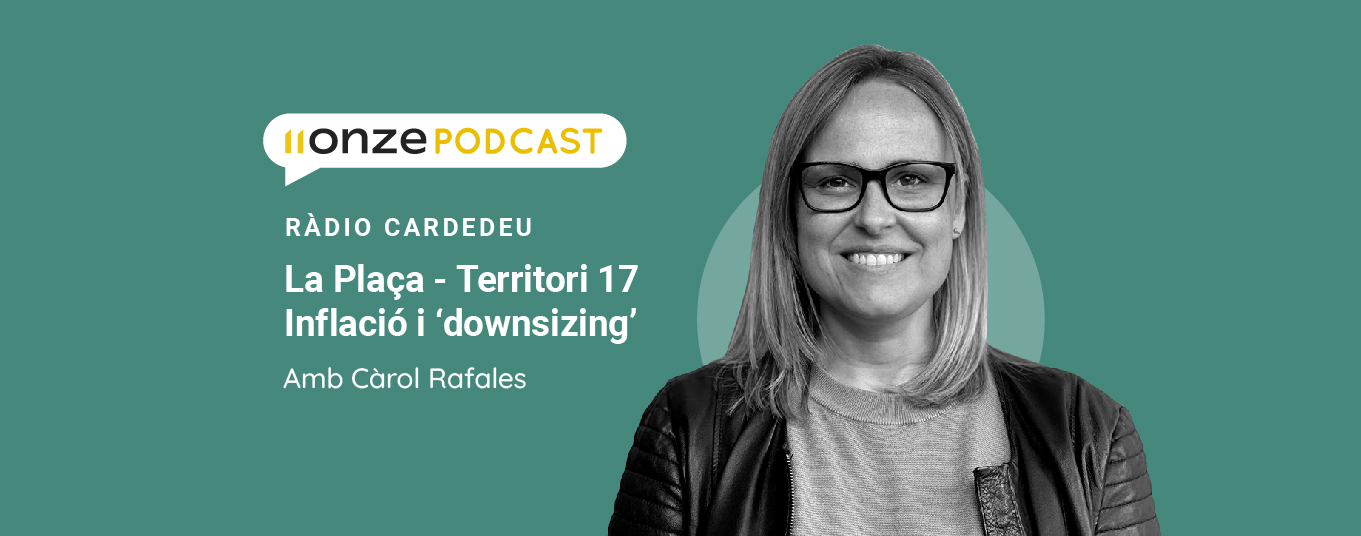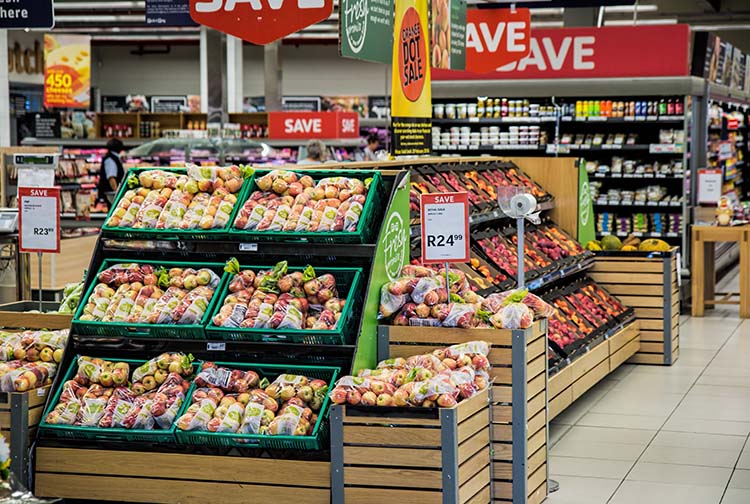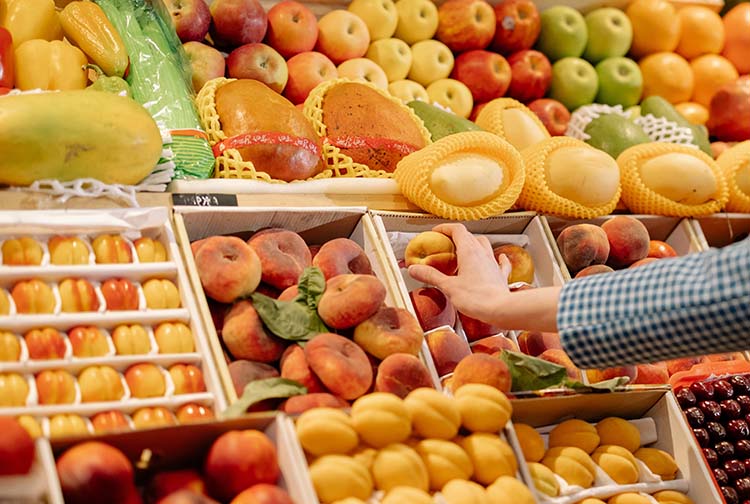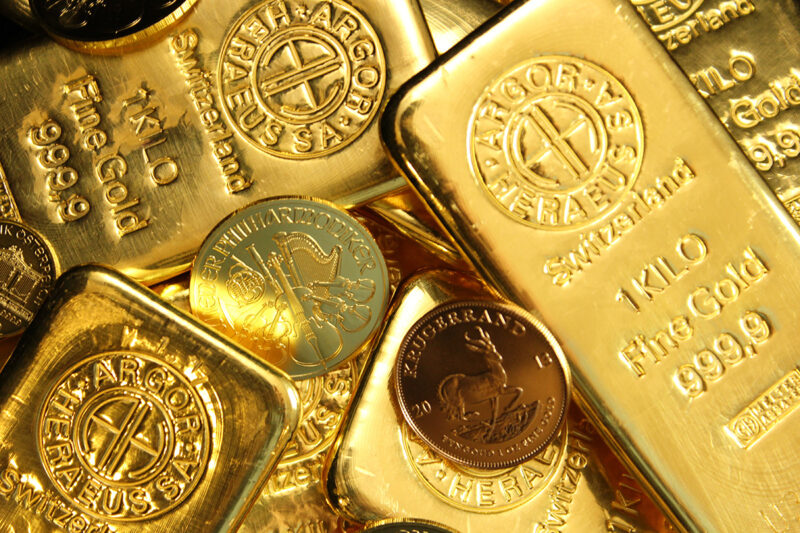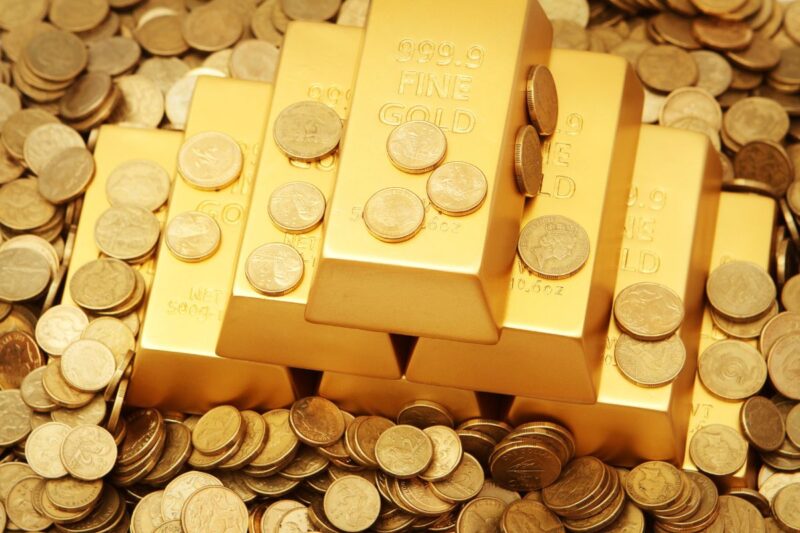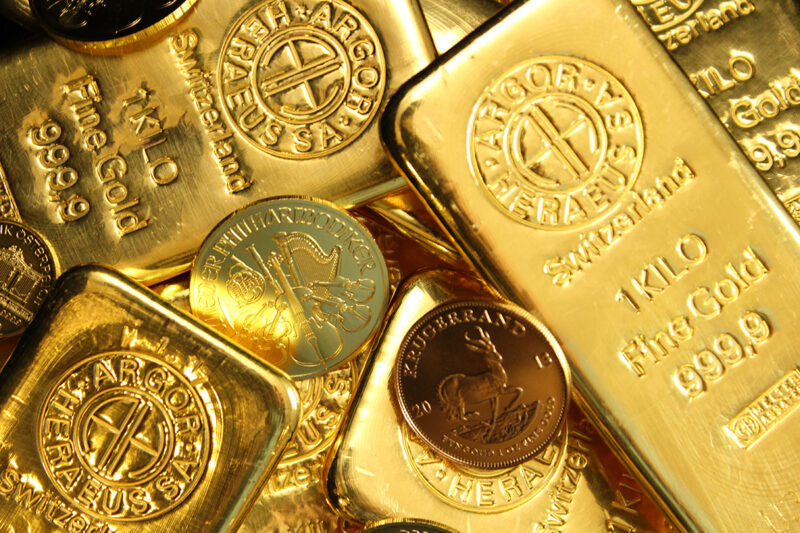The lucrative business of war
The US House of Representatives has approved another 57 billion euro aid package for Ukraine and a further 24.7 billion euros for Israel, but who will benefit from this money – the people suffering from armed conflicts or the Military Industrial Complex?
After months of stalled funding by a group of Republican lawmakers, in a rare weekend session, the US House of Representatives approved an additional package of some 89 billion euros in assistance for Ukraine, Israel, and Taiwan on Saturday.
The three foreign aid items that were voted separately will provide 57 billion euros for Ukraine, 24.7 billion euros for Israel and 7.6 billion euros for security in the Indo-Pacific region, including billions for Taiwan. The package also includes a ban until March 2025 on funding to the UN Relief and Works Agency for Palestine Refugees in the Near East (UNRWA), which provides vital assistance in Gaza.
The bulk of this aid will go to weapons support, including new weapons systems for the Ukrainian and Israeli militaries directly from US defence contractors, as well as to resupplying US and allied weapons arsenals. Let’s not forget that the Biden administration is about to approve the sale of up to 50 F-15 fighter jets to Israel, in a deal expected to exceed $18 billion.
According to the official rhetoric of President Joe Biden’s administration, this money is an urgent and necessary sacrifice at a time when threats and wars besiege US allies. Republican opponents of the bill argued that these budget items should be tied to addressing national border security problems and the country’s growing debt burden, warning against spending more funds, many of which are channelled directly to the arms industry.
The skyrocketing profits of war
The military assistance package approved last weekend is the latest in a string of major subsidies or taxpayers’ money recycling into the arms industry since the outbreak of the war in Ukraine, which has become a gold mine for the US and European MIC. This should come as no surprise, as it is often the case in every armed conflict.
According to a study by GlobalTimes, US defense contractors received almost half – $400 billion – of the $858 billion earmarked in the 2023 defence budget. Since the start of the war in Ukraine, the largest Wall Street-listed companies in the sector have accumulated share price gains of 24 billion euros.
Moreover, US weapon sales abroad rose sharply last year, reaching a record 223 billion euros, 56 per cent more than in 2022, according to State Department data.
As for the rest of NATO, the decision of the main members to increase their investment in defence due to pressure from the United States has boosted the growth projections of many multinationals in the weapons industry which, in some instances, have registered increases of up to 150% in the stock market and profits of more than 300% over the previous year, as in the case of Germany’s Rheinmetall.
Spain is experiencing the largest increase in military spending in the last 40 years. The defence budget already represents 23% more than in 2022, making it the item with the highest growth in state spending. Defence companies such as Indra, Navantia and Santa Bàrbara de Sistemas have made huge profits.
When taking into account the genocide in Gaza and the fact that the war in Ukraine has been more than lost for months, it is hard to understand how this new funding will benefit anyone, beyond the defence industry and the pockets of the politicians who are linked to it. But as BlackRock employee Serge Varlay said: politicians are easy to buy, and war is good for business.
If you want to find out how to get returns on your savings with a social justice product, 11Onze recommends Litigation Funding.
The International Monetary Fund was founded to promote international monetary cooperation, facilitate global trade and contribute to financial stability. Over time, however, its mandate was expanded to provide “support” to economies experiencing financial difficulties, and it has evolved into a tool at the service of neoliberal interests.
On 15-20 April, the annual spring meetings of the International Monetary Fund (IMF) and the World Bank are being held in Washington. The official purpose of these meetings is to bring together efforts to end extreme poverty and promote shared prosperity.
This international body was established in 1944 to promote monetary cooperation, facilitating international trade and contributing to financial stability. Since its founding, it has sought to eliminate restrictions that hinder the expansion of world trade and exchange rate stability and avoid competitive currency devaluations between countries.
With the end of fixed exchange rate systems after the gold standard was abolished during the 1970s, its role changed. The advent of neoliberalism in the US and Western European economic policies meant a new role for the IMF, which began to finance nations with trouble paying their debts and balancing their payments.
A lifeline that brings civil unrest and social misery
IMF financial assistance is not free, as is well known, loans are accompanied by strong austerity which disproportionately affects the poorest sectors of the population and often ends up benefiting the elites.
The IMF’s usual mechanism for this is the imposition of conditionalities, such as loan forgiveness for countries needing balance of payments support, or, as in the case of Pakistan, weapons transfers into Ukraine. In other words, the IMF is often used as yet another foreign policy tool of Western corporatocracies.
The conditions imposed on debtor countries open their economies to the introduction of foreign capital, corporations, and investors. This is done by privatising public services and selling off the crown jewels of the countries receiving this “aid”, especially their natural resources and land.
As a general rule, the IMF demands that governments reduce public spending, raise taxes and implement reforms to reduce their debt-to-GDP ratio. Cutting social subsidies on fuel and food or reducing public investment in hospitals, schools, and roads becomes the “new normal”.
These draconian austerity measures provoke demonstrations and revolts among the affected populations, known as “IMF riots”. A term coined to describe the waves of protests that took place in developing countries during the 1980s and 1990s, and which perfectly defines the consequences of the actions of a financial firefighter who starts fires.
The economic crises in Mexico and Greece and subsequent IMF bailouts highlighted the negative role the IMF has played in recent years, nonetheless, the widely documented record of its interventions over the last 50 years has been more than dismal. Although humanitarian organisations such as Oxfam and CAFOD never stop denouncing that the IMF’s “austerity campaigns” severely harm poor countries and that it has played a “devastating” role in the global debt crisis, the international lending agency shows little sign of changing its course.
If you want to discover the best option to protect your savings, enter Preciosos 11Onze. We will help you buy at the best price the safe-haven asset par excellence: physical gold.
The International Monetary Fund improves its growth forecasts for the Spanish economy this year and places it well above the eurozone average. Even so, it estimates that the unemployment rate will remain at 11.6%, three-tenths of a percentage point higher than it predicted in October.
The International Monetary Fund (IMF) announced on Tuesday that it is cutting its growth forecast for all the major eurozone economies for this year and next year, except for Spain, which it predicts will grow by more than double the eurozone average.
Specifically, it has adjusted its estimate for Spanish GDP growth upwards, aligning itself with the 1.9% forecast by the Bank of Spain for this year, while for 2025 it maintains its forecast of 2.1%, more optimistic than the 1.9% predicted by the Bank of Spain.
As for the rest of the eurozone, it lowers gross domestic product (GDP) growth to 0.8% in 2024, and to 1.5% in 2025, one and two-tenths of a percentage point less respectively than in the update published in January.
It also estimates that German GDP growth will be reduced by three-tenths of a percentage point in both years and will only grow by 0.2% and 1.3% respectively. France’s GDP is also expected to fall by three-tenths of a percentage point, to 0.7% this year and 1.4% in 2025. For Italy, the agency maintains its growth forecast at 0.7% for 2024 and revises downwards by four-tenths to 0.7% in 2025. For Italy, the organisation maintains its growth forecast at 0.7% for 2024 and revises downwards by four-tenths to 0.7% in 2025.
As for world GDP, it will advance somewhat more than expected, with a variation of 3.2% in 2024, one-tenth of a percentage point more than in the previous report, and 3.1% in 2025. This improvement is partly due to growth in the United States, which will grow to 2.7% this year, before slowing to 1.9% in 2025.
Stagnating public debt and unemployment
The IMF notes that “inflation could fall faster than expected if the rate of labour activity continues to rise, allowing central banks to advance their easing plans”.
In this context, he predicts that Spain will be the last major euro economy to overcome the inflationary episode. Specifically, it expects inflation in Spain to fall to 2.7% in 2024, down from 3.9% in its previous estimate.
Despite the optimism regarding Spanish GDP growth, the agency does not expect a substantial reduction in unemployment and debt levels until the end of the current decade and points out that the deficit will remain above 3% until 2029.
On the other hand, the IMF expects unemployment in Spain to fall to 11.6% this year and 11.3% next year, compared to 6.5% and 6.4% respectively estimated for the euro area, remaining at around 11% for the following years.
Likewise, public debt, which this year will stand at over 106% of GDP, will only fall slightly in 2025, to below 105%, and will remain so until 2028 and 2029, when it will fall to 104.6% and 104.2%, respectively.
If you want to discover the best option to protect your savings, enter Preciosos 11Onze. We will help you buy at the best price the safe-haven asset par excellence: physical gold.
The Western political class and its mainstream media have repeatedly claimed sanctions would bring Russia down to its knees, and yet, the economic siege has been mostly ineffective and counterproductive. While the Russian economy and its war machine are thriving, the main European economies have collapsed. What has gone wrong?
Since the beginning of the armed conflict in Ukraine in 2014, the United States and its vassal states have imposed unprecedented sanctions and trade restrictions on Russia. These measures were intended to sink the Russian economy, dismantle its war machine and limit its ability to finance the war.
Today’s sanctions against Russia go far beyond the traditional sanctions that the United States has used since the end of World War II to “punish” any country that threatens its hegemony on the global geopolitical chessboard, historically targeting the banking system and elites. Yet, they have become the most glaring example of a failure to achieve the desired results through the imposition of economic sanctions.
This Western economic siege was designed to attack the Russian economy on all fronts. On the one hand, to castrate its financing capacity by requisitioning half of its foreign currency and gold reserves, nearly 400 billion euros, and to make it impossible for it to pay its foreign debt in dollars, even if it is willing and able to do so, in order to force a default.
Moreover, the US control over SWIFT (Society for Worldwide Interbank Financial Telecommunication), as well as the International Monetary Fund (IMF) and the World Bank (WB), coupled with the hegemony of the petrodollar, allowed them to isolate Russia from the Western-led global economic system, as they had previously done against Iran when the US unilaterally withdrew the nuclear deal after breaching it from day one.
On the other hand, they wanted to curb its hydrocarbon exports and thus limit its ability to finance the war. However, while Western European economies collapsed and even went into recession, the Russian economy grew by 3.6 per cent in 2023 and is expected to grow by another 2.6 per cent in 2024, according to IMF data.
Similarly, despite Western media propaganda constantly repeating that Russia was running out of ammunition and other military supplies, the combined military-industrial capacity of the entire Western bloc and some of its client states, such as South Korea, Japan and Israel, remains far below that of Russia. They cannot even maintain the production needed to fuel the US proxy war in Ukraine, let alone produce enough ammunition for a direct confrontation against Russia.
The so-called international community
Western propaganda rhetoric also has us believe that the international community supports sanctions against Russia. It should be noted that this so-called “international community” only includes the United States, Canada, the United Kingdom, the European Union, and perhaps Australia, Japan and the occasional Micronesian island. It therefore does not include the large part of the international community who is either against the sanctions or prefers to remain neutral.
This has been reflected in the failure of the ‘real’ international community, including China and India, to follow through on Western sanctions, which has been key to maintaining Russian oil exports. Even towards the European Union and the United States, with the full knowledge of the two Western actors, thus consolidating the hypocrisy of “do as I say, not as I do”.
The same EU has continued purchasing record volumes of liquefied natural gas (LNG) from Russia. This, while the US enriched itself by tripling its EU LNG exports and selling it at a much higher price than Russia, while becoming the world’s largest LNG exporter. All thanks to the economic sanctions and sabotage of the North Stream pipelines.
A new trade and monetary paradigm
Other than those related to the energy sector, the most obvious reasons for the failure of trade sanctions on Russia revolve around implementation issues. Complex supply chains, gaps in exports of dual-use goods and the reluctance of companies to completely discontinue their business with the Russian market have established alternative trade corridors through bordering and related countries in Russia.
In the monetary sphere, the temporary convertibility of the rouble to gold at a fixed price did not mean a return to the “gold standard“, but it became key to recovering and stabilising the rouble’s value after the fall experienced by sanctions. A revaluation of the rouble against the dollar even allowed the Central Bank of Russia to lower interest rates to avoid excessive appreciation of the state currency.
After most Western governments banned imports of Russian gold, China started buying Russian gold in record numbers. In July 2022 alone, it had already imported gold worth 109 million euros, an increase of 750% compared to the previous month and 4,800% compared to the same period in 2021.
Over the past decade, Russia and China have also initiated de-dollarisation programmes, signed de-dollarisation agreements, implemented alternative interbank communication protocol systems to SWIFT and created digital currencies linked to their central banks (CBDCs).
The West has lost all credibility
Leaving aside the hypocrisy of the economic sanctions and the background of the coup d’état orchestrated by Victoria Nuland in Kyiv in 2014 that triggered the current armed conflict in Ukraine, the West lost all credibility as a moral authority decades ago, if it ever had any.
Without wishing to make a compilation of all the wars imposed by the United States and its “allies” over the last decades and justified on a pack of lies, we cannot ignore the current illegal military occupation of countries such as Syria and Iraq by the United States, likewise by Israel in Syria, Lebanon and Palestine. It is quite obvious that international law and the sovereignty of nations are only relevant and respected when it suits the West.
If anyone still had any doubts, the political and military support for the ongoing genocide in Gaza has surely vaporised the last ounce of integrity left in the Western moral compass. The complicity of the collective West in bankrolling this massacre is nothing short of a criminal endeavour worthy of a Nuremberg tribunal. Clare Daly, MEP for Ireland, being one of the few white doves in a European Parliament full of war hawks when calling out Ursula von der Leyen as “Frau Genocide”.
Given the West’s blatant hypocrisy on human rights and international law, it is hardly surprising that some of its corporations are simply pretending to comply with the sanctions, while behind closed doors they are doing everything they can to circumvent them. Nor would it be logical to expect the international community to follow the orders of the geopolitical equivalent of a school bully that is increasingly losing its strength when confronted by a multipolar world.
If you want to discover the best option to protect your savings, enter Preciosos 11Onze. We will help you buy at the best price the safe-haven asset par excellence: physical gold.
Another US bank has failed, central banks offer emergency credit lines and stocks fall. Governments and regulatory agencies assure us that we don’t have to worry about our money and the stability of the banking sector. But should we trust them? What do they say behind closed doors?
The Federal Deposit Insurance Corporation (FDIC) is a US federal agency that was created in 1933 in the aftermath of the Great Depression to protect bank deposits and prevent mass bank failures. Currently, the FDIC insures up to USD 250,000 per depositor, per insured bank, for each account ownership category.
Inside this federal agency we find the Systemic Resolution Advisory Committee (SRAC), an advisory committee established in 2011 by the FDIC as part of the Dodd-Frank Wall Street Reform and Consumer Protection Act, a law that was passed in response to the 2008 financial crisis and which introduced a series of measures to regulate the financial sector and prevent future collapses of the system.
The SRAC assists in the management of potential failures of the country’s largest banks and is made up of financial industry experts who advise the FDIC on the development of plans of action in the event of a large-scale banking collapse. The committee comprises members from different sectors of the economy, including representatives from financial regulators, banks, insurance, mutual funds and other entities.
On a need-to-know basis
Members of the SRAC meet regularly to discuss and make recommendations to the FDIC on how to address problems that a financial institution may be experiencing. They provide advice on issues such as resolution planning, identification of a bank’s assets and liabilities, communication with creditors and other related issues to help ensure the stability of the bank and the banking ecosystem. They also establish a plan of action in the event of a possible banking crisis, agreeing on the information to be provided to the public to avoid a collapse of the system.
Some of these meetings are open to the public via webcast and others are held in private, behind closed doors. One of the objectives of the last public meeting, which took place last November, seems to be to avoid widespread panic in the face of a banking crisis that could lead to a massive withdrawal of deposits by people worried about their money. It should be borne in mind that the money we have in the bank is governed by a fractional-reserve banking system, in which only a fraction of the deposits, 1% in the case of the eurozone, are required to be available for withdrawal.
In this context, we should remember that in order to avoid a collapse of the financial system during a banking crisis, the first option is to bail out certain institutions with taxpayers’ money, i.e. an external bailout. But there is also a second option known as an internal bailout or bail-in, whereby the money from shareholders, bondholders and customers with uninsured deposits – amounts above 100,000 euros in the case of the EU – is used to save the bank from falling into bankruptcy. As the committee points out, bank debt today is not systematically protected, and if it gets out of hand, the whole system collapses.
This happened in Cyprus during the 2008 financial crisis, when the government, following the instructions of the Troika (EU, ECB and IMF), confiscated citizens’ uninsured deposits to liquidate and restructure banks, causing a two-week bank shutdown to avoid a likely bank run. Hence, the importance that SRAC places on limiting communication with the general public, lest people want to withdraw their money from these banks before it completely disappears. Privileged information that, according to the committee, must be reserved for a select minority, presumably themselves or the like, who must be privy to it.
Friday news dump
The internet and 24-hour news coverage have not done away with the common PR practice of releasing bad news on a Friday to avoid major media coverage. At least this is the view of the committee’s panel when it points out that when preparing a statement detailing the tough measures that would be applied in the face of a banking crisis it is preferable to release the information “on a Friday, or ideally on a Friday night, so that people are in a position to receive it, understand it and say yeah, that works.”
Perhaps most surprising, or not, are the statements of Gary Cohn, former President and Chief Operating Officer of Goldman Sachs, when he explains that “you have to think about the unintended consequences of taking a public that has more faith and confidence in the banking system than maybe people in this room do (laughter from the audience) that, we want them to continue to have full faith and confidence in the banking system”.
One might think that the banks and regulatory agencies are aware a collapse is coming, but have little interest in letting the public know because they want to use people’s deposits to bail out these banks. Maybe we should know better after what happened during the 2008 crisis or with the failure of Silicon Valley Bank in March this year, when only a select minority who were informed of the seriousness of the situation were able to get their money out in time, but as Hegel said, “The only thing we learn from history is that we do not learn from history”.
If you want to discover the best option to protect your savings, enter Preciosos 11Onze. We will help you buy at the best price the safe-haven asset par excellence: physical gold.
Although reducing the weight of packaged products to mask a price increase is not new, persistent inflation has led many brands to use this practice to subtly make their products more expensive. In this episode of La Plaça, Gemma Vallet, director of 11Onze District, and Carolina Rafales, Product Manager, talk about the current economic situation and explain what downsizing is.
When applied to products sold in supermarkets, the term downsizing refers to offering less quantity of product for the same price, subtly reducing the amount of product to mislead consumers. This practice is also known as shrinkflation, a term credited to the British economist Pippa Malmgren.
As Gemma Vallet explains, In a situation where the CPI or inflation is getting out of hand, brands ‘use strategies to make you pay more for products’. Although, in this case, this is not an illegal marketing practice, consumer organisations warn that it is questionable and unethical because it is done with the intention of raising prices without the consumer realising it.
A drop in inflation that is not noticeable in food prices
Luis Planas, the Spanish Minister of Agriculture, Fisheries and Food, says he is “absolutely convinced” that food prices will go down, but asks consumers for “patience”, as the reduction in inflation will still take time to be reflected in the prices of supermarket products.
Given the rising cost of the shopping basket, the measures to limit the impact of inflation on consumers’ pockets have proved to be totally insufficient. The VAT reduction on foodstuffs seems to have served more to increase the commercial margins of distribution chains than to alleviate the precariousness of many families. “The situation is worrying, but despite the measures that have been taken, the market is the market, and it is difficult to foresee its impact in the short term”, stresses Carolina Rafales.
11Onze is the community fintech of Catalonia. Open an account by downloading the app El Canut for Android or iOS and join the revolution!
History shows that stock markets usually go down in the short term when central banks decide to raise interest rates. There are several reasons for this phenomenon.
In March, the US Federal Reserve (Fed) raised the money rate by a quarter point, bringing it to between 0.25 % and 0.50 %. Although the move came as no surprise given the need to control high inflation, it was a turnaround in the Fed’s policy, which had kept the price of money at almost zero since the start of the pandemic.
This increase will not be the only one in 2022. The Fed itself estimated in March that rates would end the year at 1.9%, compared to an initial forecast of 0.9%. However, this new forecast is likely to fall short. The president of the Federal Reserve Bank of St Louis, James Bullard, has publicly advocated a year-end interest rate of 3.5 %. And the markets of futures already anticipate it to be between 2.5 % and 2.75 %.
The European Central Bank has been so far reluctant to raise interest rates, but this is already an option if inflation continues to run rampant.
It is clear that central banks on both sides of the Atlantic Ocean have already started to withdraw the huge monetary stimuli deployed to alleviate the effects of Covid-19 on the economy. What could be the consequences of raising the official price of money?
A fragile equilibrium
The economy is a game of trade-offs between different variables. Cheap money stimulates economic transactions, but it also leads to higher inflation, which can end up compromising economic growth. High interest rates cool the economy and curb inflation, but can also strangle growth.
When economic bubbles occur or inflation spikes, central banks are forced to raise interest rates to stabilise the system. The difficulty is to do so without stifling the economy. While in recent years central banks have financed governments at rock-bottom prices and the private sector has had cheap money to invest, inflation is forcing a change in monetary policy. Mortgages will become more expensive, as will all other loans taken out by companies and individuals.
Unfortunately, History teaches us that the consequences of a restrictive monetary policy cascade. More expensive credit translates into lower investment, which slows the economy and can raise the spectre of unemployment.
Why does the stock market suffer?
In general, the higher cost of money is bad news for corporate profitability for several reasons.
- Consumer access to credit is more expensive, so demand tends to fall, which hurts companies’ bottom lines.
- Money also becomes more expensive for companies, which lowers the profitability of their investments on credit, limiting their profits.
- In the case of a high level of indebtedness, the increase in interest rates can even put companies in serious financial difficulties, as they have to face higher interest rates than expected.
- In addition, higher interest rates are passed on to bank deposits and the bond market. And higher yields on these products attract some of the volatile stock market investment, which can drive down share prices.
A bad deal in the short term
The fact is that on four of the last seven occasions that the Fed raised interest rates (1994, 1999, 2004 and 2015), the return on the S&P 500 index, which includes 500 large US-listed companies, was negative within three months of the move. It only recovered in the longer term.
Moreover, rising rates tend to hurt less stable stocks in particular. Sectors such as commodities or established companies, which usually offer dividends, tend to fare better in the face of this measure.
If you want to discover the best option to protect your savings, enter Preciosos 11Onze. We will help you buy at the best price the safe-haven asset par excellence: physical gold.
In a study by the OCU, Carrefour and Alcampo stand out as the supermarket chains that have increased the most, by 45% and 43% respectively. The consumer organisation demands that the VAT reduction be maintained beyond June and that it also be applied to meat and fish.
It is no secret that filling the shopping basket has a higher cost than a few years ago, even so, a report by the Organisation of Consumers and Users (OCU) which has analysed more than a hundred consumer products in seven large chains, and which includes more than 55,000 prices, it warns that the prices of food and drug store products in supermarkets have risen by an average of 38% in three years.
The study includes the online supermarket prices of Alcampo, Carrefour, Condis, Día, El Corte Inglés, Eroski and Mercadona in ten different cities throughout Spain. The chains that have risen their prices the most are Carrefour and Alcampo, with 45% and 43% respectively. They are followed by Mercadona, right in the middle, with 38%, and El Corte Inglés (Supercor, Hipercor and Opencor) with 37%.
Eroski is below the average, with 34%, and among the chains with the lowest price increases are Condis, with 33%, and Día, with 32%. The only large chains not taken into account in the study are Lidl and Aldi, as they do not have an online shop.
Mild olive oil (225%), white sugar (91%), orange juice (81%), eggs (67%) and rice (66%) are the foods that have risen most in price. The most moderate rises, although they are above 20%, were recorded for fruit and vegetables and drugstore products.
More subsidies in front of persisting inflation
The Consumers and Users Organisation recognises that there are factors that justify this increase to some extent, such as the rise in the cost of fertilisers or fuel. Still, it warns that prices at points of sale can be up to six times higher than the prices received by farmers and stockbreeders.
Faced with this scenario, the consumer organisation demands that the VAT reduction be extended beyond June and that it also be applied to meat and fish, given that 50% of families have difficulties in acquiring them.
On the other hand, it calls for a substantial increase in the 200 euro cheque for families with an income of less than 27,000 euros, as well as an increase in the number of beneficiaries, raising the income limit. It also points out that compliance with the Law on the Food Chain should be monitored more closely and that distributors should try to contain their margins so as not to feed the inflationary spiral.
If you want to discover the best option to protect your savings, enter Preciosos 11Onze. We will help you buy at the best price the safe-haven asset par excellence: physical gold.
On 21 February the Fábrica Nacional de Moneda y Timbre (FNMT) received authorisation from the Council of Ministers to formalise the purchase of 40 million euros in gold. The intention is to mint investment coins and offer them as safe-haven assets against inflationary pressure and market volatility.
It is no secret that in front of an economic crisis, gold is a highly appreciated asset for investors. World gold demand rose 18% in 2022 to 4,741 tonnes, the highest in over a decade. Gold purchases by governments and central banks soared to a record 1,136 tonnes not seen in 55 years.
Given the current context of inflation, market volatility, bank failures, the low return that banks are offering on deposits, and the rising interest rates of the European Central Bank (ECB), it is not surprising that not only central banks but also more and more investors are diversifying their portfolios into tangible, low-risk securities such as gold.
Investment coins, also known as bullion coins, minted in precious metals, generally gold and silver, play a key role in this savings diversification. The numismatic value of a coin’s craftsmanship, design, historical significance, commemorative value and physical condition can drive demand from collectors and investors.
A new gold rush
The FNMT did not want to be left behind and in 2021 decided to start minting Spanish bullion coins, bringing to the market a whole series of special editions of gold coins, following in the tradition of other world mints such as the Royal Mint, South African Mint or the Münze Österreich.
The escalating demand for gold has also been reflected in the forecast quantities of gold coins to be minted by the FNMT. Whereas for the first two issues, the agreements concluded with the gold suppliers did not exceed 10 million euros, this time the Council of Ministers has authorised the purchase of 40 million euros worth of gold for the production of investment and collector coins.
This exponential increase in the procurement value responds to the volume of sales made previously and to the evolution of the gold market over the last two years, together with the current and short-term economic context. This fact seems to confirm that physical gold as a safe-haven asset par excellence, whether in bullion or coin format, has not only not gone out of fashion, but is more relevant than ever when it comes to protecting our savings.
Protecting savings with physical gold has been one of 11Onze’s main contributions to its community, and now the range of products is expanding. This is why, in the face of volatility, still high inflation and the growing crisis of confidence in the banking system, gold is once again strengthening its position as a safe-haven asset. Discover Gold Seed at Preciosos 11Onze.
The Catalan economy is made up of a veritable “great spider’s web,” as Roger Vinton calls it in the title of his book. Faced with this idea, and with the suspicion that the knots and actors in this web are poorly explained, a good number of books have appeared on a recurring basis that attempt to untangle it. We review them in La Plaça.
The reflections that follow, whether in the form of memoirs, such as those by Josep Pla and Cristian Segura, or in the form of journalistic essays, such as those by Roger Vinton, Gemma Garcia Fàbregas, Jordi Amat, Pere Cullell and Andreu Farràs, describe how the productive and financial economy works in the hands of elites who prefer to remain in the shadows.
- ‘Homenots’, by Josep Pla. ‘Homenots’ is a series of 60 profiles by Josep Pla on figures of his time. They were published between 1958 and 1962 by Editorial Selecta and between 1969 and 1974 by Editorial Destino in four volumes. In the preface to one of the volumes, Pla stated that, for him, “a ‘homenot’ is a singular, unusual type, a person who has been significant, in any activity, in a remarkable way.” Among these profiles are those of Prat de la Riba, Jaume Bofill, Joan Miquel Avellí and Ramon Godó, among many others, who make up the economic and political substratum of the country.
- ‘L’oasi català’ (2001), by Pere Cullell and Andreu Farràs. The Catalan oasis refers to the close relations that developed between the Catalan bourgeoisie and the centralism of the Madrid court in the 19th century. The term seems to have been coined by the journalist Manuel Brunet. And it seems that, today, there would be some 400 people who would represent this Catalan elite spread across cultural and economic centres. With this expression, the journalists Pere Cullell and Andreu Farràs titled their essay, in which they explain the family, educational and summering relationships of a good part of these leading figures of Catalan society, who embrace the entire Catalan political spectrum.
- ‘Els senyors del boom’ (2014), by Gemma Garcia Fàbregas. The journalist touches in depth a very sensitive story, that of the real estate gold rush experienced in the Catalan Countries and its social, political and economic impacts, with first-hand information and a highly documented analysis that opens a new perspective on the reasons for a catastrophe foretold as was the real estate bubble.
‘La gran teranyina’ (2017), by Roger Vinton. ‘La gran teranyina’ reveals the opaque structure from which certain agents exercise the power through which they control events and situations that affect our society on a daily basis. This book allows us, in Vinton’s own words, to “open our eyes and become aware of the immense power of the individual.” A profound investigation that changes the perception of Catalonia and that some have considered a true reference manual or compass in the jungle of power. - ‘El fill del xofer’ (2020), by Jordi Amat. Following the dark figure of Alfons Quintà -journalist, lawyer, merchant navy officer and judge, who on 19 December 2016 murdered his wife and then committed suicide with a hunting rifle-, Jordi Amat reflects on power. Behind a dazzling journalistic career, which spans from the direction of TV3 to the talk shows of Intereconomía, a dark trajectory is hidden, full of blackmail, sexual persecutions, abuses of authority and various tricks, which shows how the sewers of power work in Catalonia.
- ‘Gent d’ordre’ (2021), by Cristian Segura. Halfway between an essay, a memoir and a journalistic chronicle, Cristian Segura writes an exhaustive portrait of Barcelona’s elites. A society in transformation due to globalisation, the consolidation of the welfare state and also the hegemony of Catalan nationalism. Elites do not disappear, they are transformed. And Barcelona is the paradigm of this.
11Onze is the fintech community of Catalonia. Open an account by downloading the app El Canut on Android and Apple and join the revolution!
